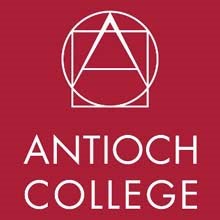In response to a reader comment to his last Retroterm of the Day, local writer Ralph Keyes offers this expanded version of the subject, taken directly from his latest book, I Love It When You Talk Retro: Hoochie Coochie, Double Whammy, Drop a Dime, and the Forgotten Origins of American Speech:
When she was secretary of state, Madeleine Albright baffled China’s ambassador to the United States by asking him to treat her nicely because it was Sadie Hawkins Day. Any American of a certain age knew what Albright was referring to: an annual race run in Dogpatch, USA, where the comic strip Li’l Abner was set. Worried that his homely daughter Sadie might never get married, Dogpatch resident Hezebiah Hawkins or ganized an event to make sure this didn’t happen. On October 16, 1937, the mayor of Dogpatch proclaimed, “Whereas there be inside our town a passel of gals what ain’t married but craves something awful to be . . . we hereby proclaims and decrees... Saturday, November 4th Sadie Hawkins Day, whereon a foot race will be held, the unmarried gals to chase the unmarried men and if they ketch them, the men by law must marry the gals and no two ways about it.” This race, which became a recurring episode in Li’l Abner, inspired decades of Sadie Hawkins Day events in American schools, including dances to which girls invited boys.
At the peak of Li’l Abner’s popularity, the antics of buff, amiable, dimwitted Abner Yokum and his hillbilly pals in Dogpatch fascinated some sixty million readers of nearly nine hundred newspapers. From 1934 to 1977, the words and phrases Dogpatch residents liked to toss around—natcherly, druthers, and as any fool can plainly see—were picked up by readers. Nobel laureate John Steinbeck, who considered Capp himself worthy of a Nobel, said Li’l Abner’s creator “not only invented a language but . . . planted it in us so deeply that we can talk it ourselves.”
Capp’s real contribution to retrotalk was characters and settings so vivid that three decades since his death in 1979 we still refer to them. Stephen King characterized the hardscrabble Maine town where he grew up as “Dogpatch with no sense of humor.” Critic Rex Reed compared King himself to “an overweight Li’l Abner.” On NBC’s West Wing, U.S. president Jed Bartlett called his elderly secretary “Mammy Yokum.” This referred to Abner’s mother, a wizened little woman with a black bonnet and corncob pipe clamped in her teeth who dominated Pappy Yokum and everyone else in her vicinity. Mammy Yokum was the only Dogpatch resident able to thwart the dastardly Evil Eye Fleegle. This gnomish, scowling, zoot-suited hoodlum from Brooklyn could flatten any man or woman alive with “nature’s most stupefyin’equipment—THE UNLIMITLESS POWER OF THE HUMAN EYEBALL!” Fleegle harnessed this power by focusing one eye on his targets while pointing in their direction. That was a whammy. Capp then upped the ante by having Fleegle train both eyes on his victims and point at them with two fingers. This was a double whammy, powerful enough to topple the Empire State Building or melt a locomotive going full steam. In an era when swollen SUVs clog our highways and combo meals are routinely supersized, one seldom hears about single whammies any longer. References to double whammies, on the other hand—two strokes of misfortune endured at once—are commonplace. The lethal combination of drought and wildfires in southern California is a classic double whammy.
Some Dogpatchers worked at the Skonk Works brewing liquor from dead skunks, old shoes, and other debris. They called this concoction Kickapoo Joy Juice. That name remains synonymous with any strong drink, usually cheap, often homemade (and has become an actual brand of soda pop). The name of this drink’s brewery inspired Lockheed Martin’s research and development department to call itself “the Skunk Works.” Working in tents and big packing crates, 120 skunk workers needed just forty-three days to build the first World War II–era airplane that could fly faster than five hundred miles an hour. Skunk works was subsequently applied to any loosely knit group within a larger organization whose members engage in creative activity.
Not far from Dogpatch was the Valley of the Shmoon, home to a band of smiling creatures shaped like bowling pins who lived to make human beings happy, even when this meant rolling over and dying so their flesh could be consumed. Shmoo flesh tasted like whatever the consumer wanted it to taste like: chicken when fried, steak when broiled, oysters on the half shell when eaten raw. Their skin made sturdy lumber when cut thick, or fine leather if cut thin. Shmoo eyes made excellent buttons, their whiskers outstanding toothpicks. During the late 1940s and early 1950s Shmoos captivated Americans, even appearing on the cover of Time magazine. Decades later Time called an Alexander Calder sculpture “shmoo-like.”
One of Capp’s most endearing—and enduring—creations was a forlorn little man in rags who was followed about by a dark cloud raining down on his head. This cloud signified the misfortune that always accompanied the figure below: Joe Btfsplk. Since we all feel like Joe Btfsplk at times, “Btsflpk” remained part of the national conversation long after his creator had the ultimate misfortune of dying. Columnist Bob Ortman once reported that “during a Colorado vacation I discovered that I have that rare Joe Btfsplkian talent to turn on clouds. . . . All I had to do was walk outdoors.” Since Joe’s last name is hard to pronounce and harder to spell—“Joe Btfsplk,” he’d say, “pronounced B-t-f-s-p-l-k”—we sometimes content ourselves with referring to someone who, like him, lives under a dark cloud or a black cloud. “Union Carbide has been like the cartoon character with a black cloud over its head,” reported the New York Times.
Friday, May 22, 2009
Subscribe to:
Post Comments (Atom)








1 comment:
Thank you! This was really interesting and also solved a puzzle for me: I had wondered why these salt and pepper sets by the wonderful ceramic artist Eva Zeisel are called "shmoos" --- now I know!
http://www.mindspring.com/~dway/t&c_hr_images/schmoo_village.gif
Post a Comment